I woke to the splashing of salmon leaping around MUSTELID, our 24′ by 5′ 4″ home-built, plywood camp-cruiser. Anke slept alongside me, her long hair a sleepy bronze-and-silver tangle. Two layers of sleeping bag, spread wide against the early-morning chill, rose and fell with every breath. Today, we faced a difficult test with a tide to catch. I kissed her awake. I sat up and looked around through the expansive, plexiglass windows flanking the narrow, 4′ × 8′ cabin. Salmon were launching themselves in mercurial arcs, and low clouds, dense with charcoal underbellies, obscured the dark upward slopes of Kruzof Island on either side. The more-often-than-not fog of the last week had lifted slightly, at least within the bay. In light winds, we might row while sailing if we’re hurrying to catch a tide. Here, during sea trials, we sailed under the Ljungström foresail and mizzen. The driver, our aft sail to be stepped on the outside of the transom, was added later. The boards are deployed against guards and prevented from winging out to windward by line secured to the guard ends.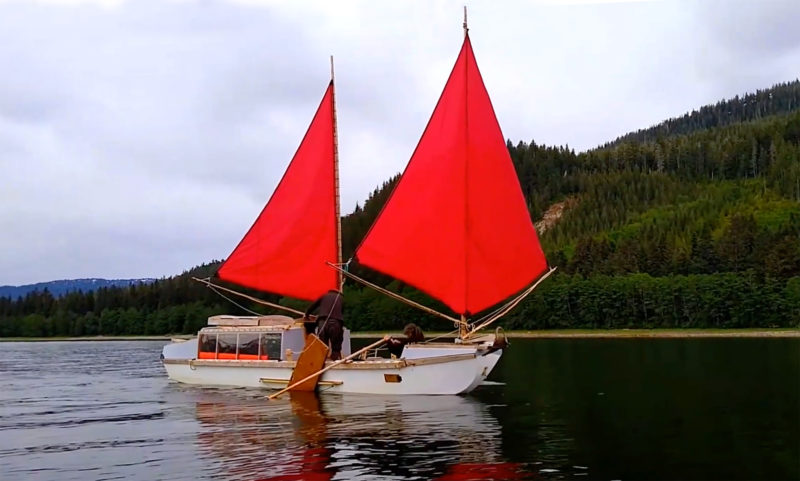 David Reece
David Reece
Join The Conversation
We welcome your comments about this article. If you’d like to include a photo or a video with your comment, please email the file or link.

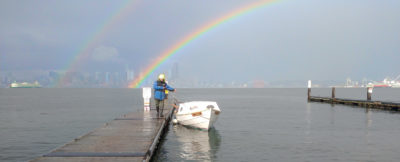

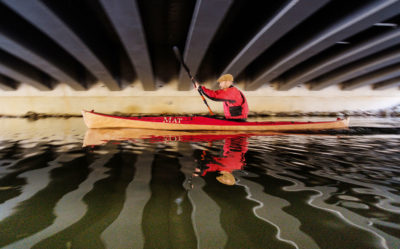
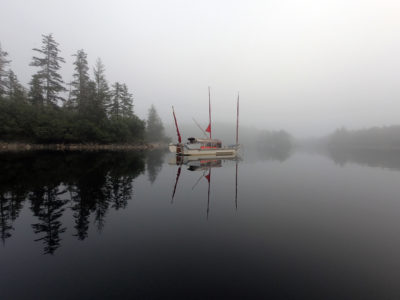
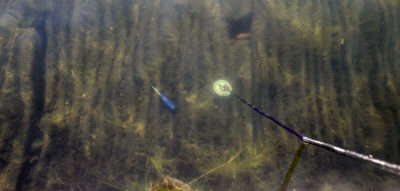
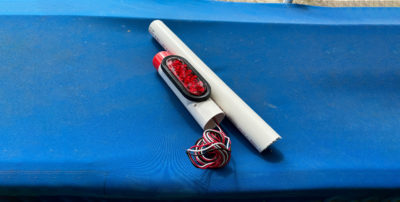
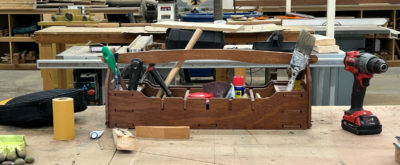
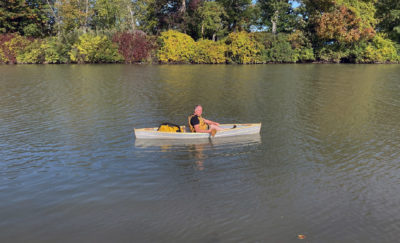
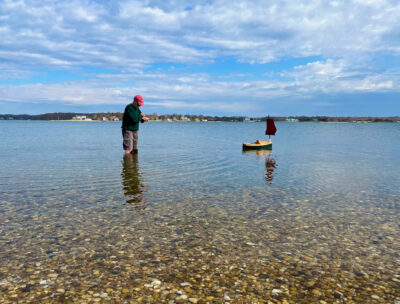
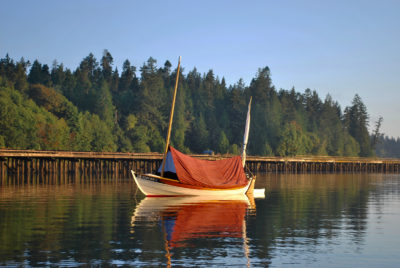
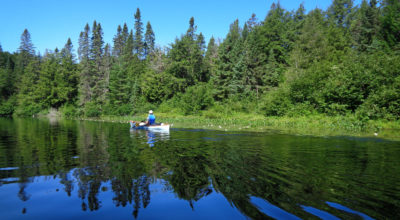
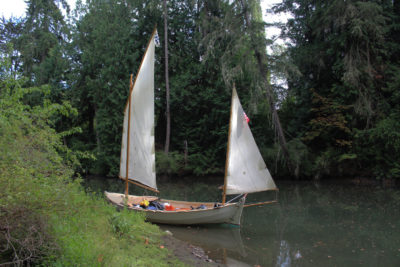
So glad to comment on this adventure. Dave and Anke are simply awesome: ingenious and generous souls. I’m looking forward to enjoying this series on MUSTELID. And learning lots.
“…. we’d have a run up a pernicious coast …,” indeed, Dave and Anke, indeed.
What a treat to hear more about the MUSTELID adventures. I have been following their website for years and have been hoping to hear more about this adventure since Dave first wrote about it. MUSTELID seems to be an excellent platform to take on adventures large and small. Dave’s get-it-done pragmatism and design ideals of simple and failsafe solutions letting you access all the shallows and exponentially expanding a the coastline make the build and adventure seem achievable. I will be following along for this ride, so roll on Saturday and the next.
Looking forward to this series. Been waffling over a design to ply the rivers and reservoirs in my area.
Very impressive. A boat/person could spend a year between Piehle’s and Lisianski and rarely be seen. Incredible country. Hope you got a bath or two at White Sulphur, where I want my ashes strewn.
Cheers,
Bill
Hi Bill,
We totally agree, and who knows? May have such a year yet in the cards. We did get to visit White Sulphur, which lived up to its reputation… that portion of the trip will be covered in MUSTELID – Episode 10.
May your ashes be strewn a very long way down a joyous road!
Dave Z
This is an amazing story, by such a remarkable couple! Wonderful!